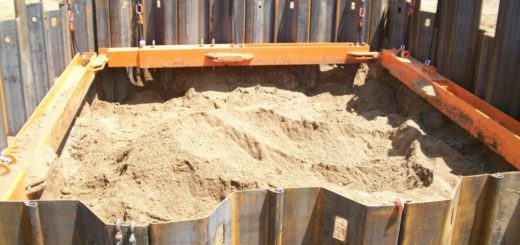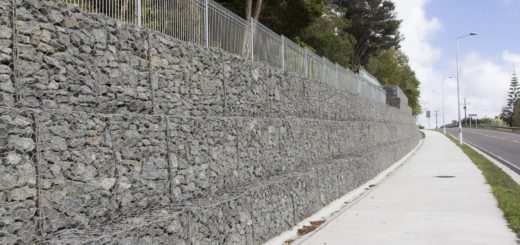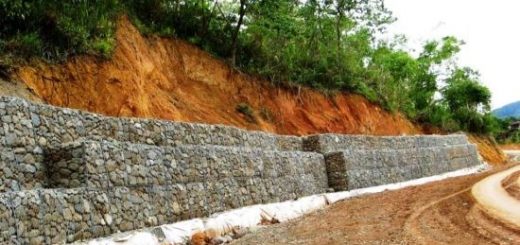Stability Analysis of Structures
Stability analysis of structures is mainly considered as sliding, overturning and uplifting. Sliding and overturning are due to lateral loads and uplift are due to the upward pressure created by liquids.
Design a simple retaining wall may not need to follow the procedure mention in this article.
The basic method shown in another article on this web site could be referred to.
Depending on the occurrence of an event or considering the return period of an even, stability analysis is done.
The factor of safety is varying with the return period or the probability of occurrence.
When the return period increases, the factor of safety is also increasing.
Further, the type/use of the structure is also considered when the factor of safety is determined. Depending on the importance of the structure, higher factors are adopted in the stability analysis of structures.
This discussion is based on the information published in EM 1110-2-2100: 2005.
Based on the probability of occurrence/return period of an even, three main categories of loading conditions are identified.
They are usual, unusual and extreme.
Following the explanation was given in the EM 1110-2-2100 explaining clearly the boundaries of each condition.
USUAL
Usual loads identified as load and loading conditions, which are related to the primary function of the structure and can be expected to occur frequently during the service life of the structure.
A usual even is a common occurrence and the structure is expected to perform in the linearly elastic range.
Ex. Applying soil load on retaining wall.
UNUSUAL
Unusual loads refer to operating loads and loading conditions that are of infrequent occurrence.
Construction and maintenance loads, because risks can be controlled by specifying the sequence or duration of activities, and/or by monitoring performance, are also classified as unusual loads.
Loads on temporary structures that are used to facilitate project construction are also classified as unusual.
For an unusual event, some minor nonlinear behavior is acceptable, but any necessary repairs are expected to be minor.
EXTREME
Extreme loads refer to events, which are highly improbable and can be regarded as emergency conditions.
Such events may be associated with major accidents involving impacts or explosions and natural disasters due to earthquakes or flooding which have a frequency of occurrence that greatly exceeds the economic service life of the structure.
Extreme loads may also result from the combination of unusual loading events.
The structure is expected to accommodate extreme loads without experiencing a catastrophic failure, although structural damage which partially impairs the operational functions are expected, and major rehabilitation or replacement of the structure might be necessary.
The variation of loading condition probabilities is shown in the following table.

FACTOR SAFETY AGAINST SLIDING
The factor of safety against sliding is defined based on the site condition and depending on the type of loading as discussed previously in the stability analysis of structures.
Generally, sliding resistance is calculated by adding friction force and resistance generated due to the cohesion of the layers.
The following equation can be applied for the calculated factor of safety against sliding.
FS = (N tanΦ + cL ) / T
Where,
N – Force acting normal to the sliding failure plane under the structural wedge
Φ – Angle of internal friction of the foundation material under the structural wedge
c – Cohesive strength of the foundation material under the structural wedge
L – Length of the structural wedge in contact with the foundation
T – Shear force acting parallel to the base of the structural wedge
The factor of safety for sliding can be evaluated based on the values given in the EM 1110-2-2100. Factors of safety for critical structures can be evaluated from the following table.

*For preliminary seismic analysis without detailed site-specific ground motion, use FS = 1.7 for unusual and FS = 1.3 for extreme.
** Limited site information is not permitted for critical structures.
Factors safety against sliding in normal structures can be taken following table as stipulated in EM 1110-2-2100.

As discussed, depending on the loading condition and site conditions, the factor of safety against sliding can be calculated.
FACTORS SAFETY FOR FLOTATION IN STABILITY ANALYSIS OF STRUCTURES
Most of the underground structures are need to be checked against flotation as they could be uplifted due to the water pressure excreted on them.
In addition, some of the structures, need to be check for uplifting which may cause during the construction.
Firstly, the total vertical downward force is calculated.
Weight of the structure, any liquid contained within the structure (if any) and any surcharged load applied on the structure.
When the critical load case is considered, the minimum vertical load shall be considered. Application of the surcharged load may be considered depending on its nature or whether it applied continuously.
FS = Total vertical load / Uplift Force
Values given in the following table can be used as factors of safety against sliding

OVERTURNING FOR STABILITY ANALYSIS OF STRUCTURES
It is one of the common practices to find the factor of safety against overturning by calculating by the ratio between the story moment and the overturning moment.
However, as discussed in EM 1110-2-2100, checking whether the base is in compression and checking whether the resultant with the base is more relevant.
The following conditions are checked to make sure the sliding is within the limit.

Based on the location where the resultant force meets the based, it can be determined whether it is acceptable or not acceptable for applied loading conditions.
The article stability calculation of retaining walls could be referred for calculation methods for some of above checks.



